The Java Fern Windelov, a unique aquatic plant, is renowned for its distinctively split and branched leaf tips that resemble a deer’s antler. This unusual frond shape distinguishes it from other Java fern varieties. Originating from Southeast Asia, the plant carries the name of Holger Windeløv, a famed aquarist.
An intriguing aspect of this plant is its adaptability to both submerged and emersed conditions. Interestingly, it propagates through adventitious plants that grow from the leaf edges, which upon reaching a certain size, detach and settle elsewhere. This unusual propagation mechanism makes it a compelling addition to any aquarium setting.
Table of Contents
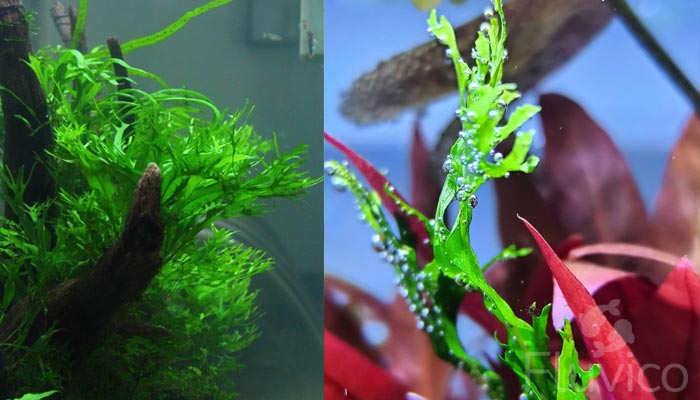
Windelov Java Fern Characteristics
- Scientific Name: Microsorum pteropus ‘Windelov’
- Common Name: Windelov Java Fern, Lace Java Fern, Java Fern Windelov
- Origin: Originally found in Southeast Asia.
- Living Conditions: Thrives in both submerged and emersed conditions.
- Light and Water Preferences: Prefers low to moderate lighting and a wide range of water conditions.
- Plant Demands: Not a demanding plant, making it suitable for beginners.
- Leaf Structure: Distinctive fronds split and branch, resembling a deer’s antler.
- Size: Mature leaves can reach a length of up to 20 cm.
- Color: Characteristic dark green color adds a vibrant touch to aquarium settings.
- Growth Rate and Adaptability: Its slow growth rate and hardy nature allow it to adapt to various aquarium environments.
- Placement: Capable of thriving on rocks, driftwood, or even loosely attached to substrate.
- Propagation: Propagates through adventitious plants that grow from the leaf edges.
Habitat And Appearance
The Windelov Java Fern, scientific name Microsorum pteropus ‘Windelov’, is native to Southeast Asia. It is distinguished by its distinct, branched fronds that resemble a deer’s antler. With a mature size of up to 20 cm, the fern’s dark green leaves add a vibrant touch to any aquarium.
It thrives in low to moderate lighting, adaptable to various water conditions. This undemanding fern can grow on rocks, driftwood, or loosely attach to substrate, making it an easy-care choice for both beginner and expert aquarists. Unique to this fern, propagation occurs through adventitious plants that grow from leaf edges.
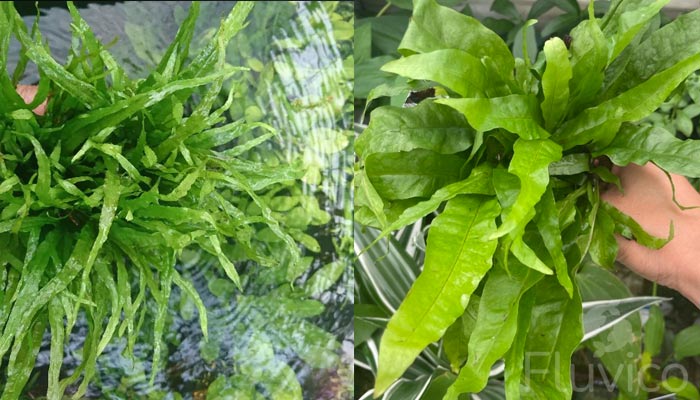
Types And Varieties
The Java Fern genus (Microsorum) is quite diverse and includes several varieties that are popular in aquascaping. While this guide focuses on the Windelov Java Fern, there are other varieties to consider, each offering unique aesthetics for your aquarium:
- Microsorum pteropus ‘Narrow Leaf’: As the name suggests, this variety has narrower leaves compared to the standard Java Fern. It has a delicate and fine appearance, which can create an interesting texture contrast in an aquascape.
- Microsorum pteropus ‘Trident’: The Trident variety is known for having leaves that split into three or more tips, creating a shape reminiscent of a trident. It’s an attractive addition to any aquarium.
- Microsorum pteropus ‘Needle Leaf’: This variety has extremely narrow, almost needle-like leaves. It’s a less common variety but can add an eye-catching look to your aquarium.
- Microsorum pteropus ‘Standard’: This is the most common type of Java Fern. It has broad, sturdy leaves that can handle a range of conditions, making it ideal for beginner aquarists.
How to Plant Windelov Java Ferns
Tank Setup
- Aquarium Size: A minimum of 10 gallons is recommended, but it can thrive in larger settings too.
- Substrate: Not necessary, as it prefers to attach to hardscapes.
- Hardscape: Driftwood, rocks, or aquarium decorations for the fern to attach itself to.
- Water Conditions: Soft to moderately hard water, with a pH range of 6.0 to 7.5.
- Temperature: Prefers slightly warmer conditions, between 68°F and 82°F.
- Lighting: Low to medium lighting is ideal.
- Current: Moderate water movement helps maintain optimal health.
- CO2: Not necessary, but can enhance growth.
- Filtration: Gentle filtration helps mimic its natural stream-like habitat.
- Tankmates: Compatible with a variety of fish, but avoid plant-nibbling species.

Light Requirements
- Lighting Levels: Prefers low to medium lighting conditions.
- Duration: A daily light cycle of about 8-10 hours is recommended.
- Artificial Lights: LED or fluorescent lights are suitable, but intense lighting should be avoided.
- Placement: Position the plant in areas where it will not be subjected to direct, intense light.
- Shade Tolerance: Can thrive even in shaded areas of the aquarium due to its adaptability.
- Impact of Light: Insufficient lighting can lead to slow growth, while too much light may cause leaf burn.
- Algae Prevention: Regulating light exposure can help prevent the formation of algae on the leaves.
Temperature,CO2 and pH Requirements
- Temperature: This fern prefers slightly warmer conditions, with an ideal temperature range between 68°F and 82°F. Consistent temperatures within this range promote healthy growth.
- CO2: While this plant doesn’t require CO2 supplementation, it can benefit from it. Moderate CO2 levels can enhance growth and leaf coloration. However, it’s important to ensure that CO2 levels do not exceed the safe limit for fish and other tank inhabitants.
- pH Requirements: The fern is quite adaptable and can tolerate a pH range from 6.0 to 7.5. Maintaining a stable pH within this range helps ensure the plant’s health and vitality. Regular water testing is recommended to monitor pH levels and keep them consistent.
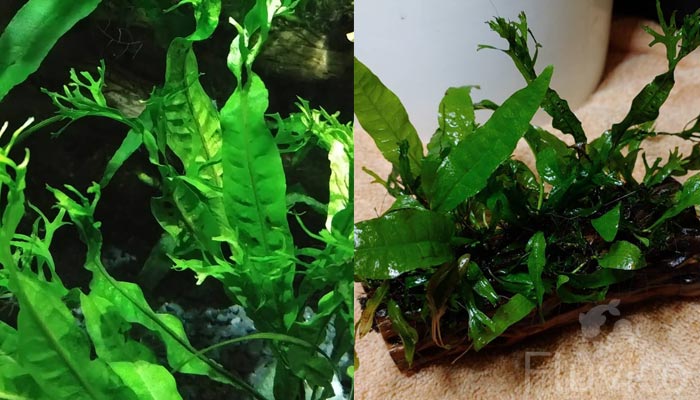
Planting Windelov Java Fern
To plant the Windelov Java Fern, you can follow these steps:
- Choose your plant: Select a healthy-looking fern from a reputable source. Look for vibrant green leaves and a robust rhizome (the thick, horizontal stem part).
- Prepare the plant: Rinse the fern thoroughly under lukewarm tap water to remove any potential pests, chemicals, or loose debris.
- Select the location: Choose a spot in your aquarium where the fern will receive adequate light but not be overwhelmed by stronger currents or direct, intense light. Remember that this plant prefers to attach to something rather than being planted in substrate.
- Secure the plant: Using aquarium-safe thread or glue, attach the rhizome to a piece of driftwood, rock, or another aquarium decoration. Make sure not to bury the rhizome in the substrate, as this can cause it to rot.
- Monitor the plant: Once attached, the fern will slowly start to establish itself by sending out small roots to further secure itself to the surface. Monitor the plant for signs of stress and adjust its location or tank conditions as necessary.
- Maintenance: Trim off any brown or dying leaves as necessary to keep the plant healthy. This also ensures that the plant’s energy is directed towards new growth.
Windelov Java Fern Care
Propagation
Propagation in Windelov Java Fern occurs in a unique and interesting way. Here are the steps outlining the process:
- Spot the new growth: Over time, mature leaves of the plant will develop tiny bumps along their edges. These bumps are adventitious plants or “plantlets,” which will eventually grow into new ferns.
- Let it grow: Allow the plantlet to grow while still attached to the parent leaf. It will start to develop its own leaves and roots. This process requires no intervention and will occur naturally in the right conditions.
- Separation: Once the plantlet has grown to a size of around an inch or more, and has a robust set of roots, it’s ready for separation. You can leave it to detach naturally, or you may gently remove it yourself.
- Plant the new fern: Attach the new plant to a piece of driftwood, rock, or decoration just like the parent plant. Use thread or aquarium-safe glue to secure it in place.
- Monitor: Keep an eye on the new plant to ensure it’s adjusting well. Over time, it should start to grow and thrive, just like the parent plant.
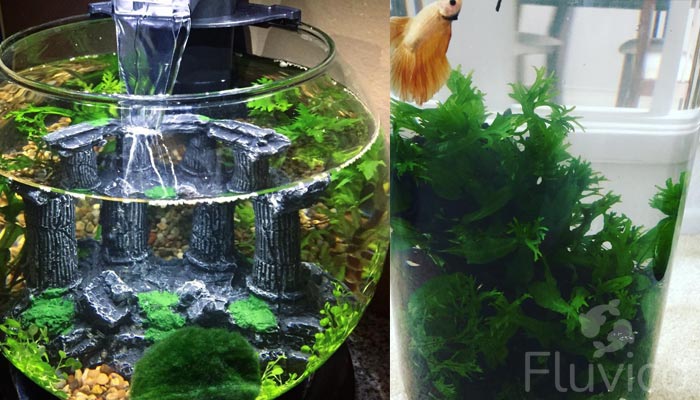
Trimming and Cutting
Trimming and cutting the Java Fern Windelov is quite straightforward, and it’s a crucial part of maintaining the plant’s health and promoting its growth. Here’s how to do it:
- Identify the leaves: Look for any leaves that are brown, yellow, or have holes. These are likely dying and should be removed to redirect the plant’s energy towards new growth.
- Trim carefully: Using a pair of sharp, sterilized aquarium scissors, cut off the unhealthy leaves at the base near the rhizome. Be careful not to damage the rhizome or nearby healthy leaves.
- Remove cuttings: After cutting, ensure you remove all plant material from the tank to prevent it from decomposing in the water, which could cause water quality issues.
- Regular maintenance: Regularly check the plant for any signs of ill health or disease and trim as necessary.
- Trim for propagation: If you notice plantlets growing on the leaves and they’ve developed sufficient roots, you can trim these off for propagation. Cut the leaf section with the plantlet and attach it to a suitable location in the aquarium.
- Don’t over trim: Remember, a little bit of trimming can go a long way. Try not to overdo it and always leave enough leaves for the plant to photosynthesize effectively.
Tips for Increasing CO2 Levels in Aquariums
- CO2 Injection Systems: These are the most effective way to increase CO2 levels. These systems inject CO2 directly into your aquarium and usually come with a regulator to control the amount of gas released.
- Liquid Carbon Supplements: Some aquarists opt for liquid carbon supplements as a simpler, albeit less effective, alternative to CO2 injection systems. These are added directly to the aquarium water.
- DIY Yeast CO2 Generators: This is a cost-effective method that involves a setup with yeast, sugar, and a bottle. The yeast ferments the sugar to produce CO2, which is then released into the tank.
- CO2 Tablets: These tablets are simply placed in the aquarium and they slowly release CO2 as they dissolve.
- Use a CO2 Diffuser: Regardless of your CO2 source, using a CO2 diffuser ensures the gas is effectively distributed throughout the aquarium.
- Monitoring CO2 Levels: It’s crucial to monitor CO2 levels to ensure they’re within a safe range for your fish and plants. Too much CO2 can harm your fish, while too little won’t benefit your plants.
Remember, while Windelov Java Fern can benefit from extra CO2, it can still thrive without it due to its hardy nature. Always make sure that any changes in CO2 levels are done gradually and carefully monitored to prevent harm to your aquarium inhabitants.
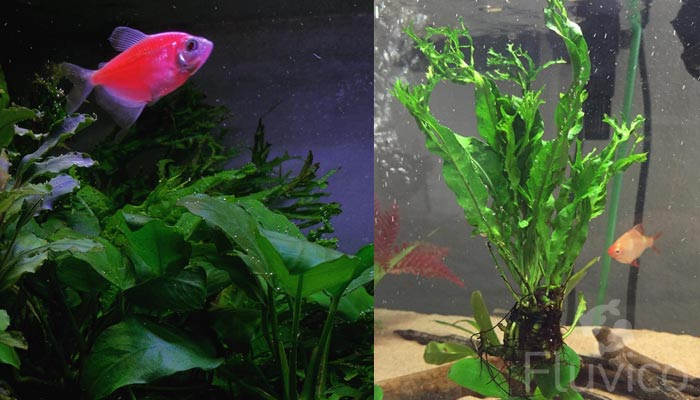
Additional Care Tips
- Avoid Burying the Rhizome: The rhizome should never be buried in the substrate as it can rot. Instead, attach it to hardscape elements like driftwood or rocks.
- Regulate Light Exposure: Overexposure to light can cause the leaves to turn brown and may promote algae growth. It’s better to place the fern in an area with indirect light or shade.
- Nutrient Supplementation: While the fern isn’t a heavy feeder, occasional doses of a comprehensive liquid fertilizer can promote healthier growth.
- Tank Mates: Choose tank mates wisely. Avoid plant-eating fish, as they may damage the fern. Ideal companions are small, peaceful fish and invertebrates.
- Regular Maintenance: Regular trimming helps maintain the plant’s health and appearance. Always remove any decaying leaves from the tank to keep the water quality high.
- Adaptability: Embrace the fern’s adaptable nature. It can thrive in various water conditions, so don’t worry too much if your tank doesn’t exactly match the ‘ideal’ parameters.
- Patience is Key: This fern is known for slow growth. Don’t be discouraged if it doesn’t seem to be growing much. As long as it’s green and healthy, it’s doing well!
Benefitsf of Java Fern Windelov in Your Aquarium
- Easy Care: This fern is known for its hardiness and ability to tolerate a variety of water conditions, making it a great choice for beginners and experienced aquarists alike.
- Visual Appeal: With its delicate, lace-like leaf tips, the Windelov Java Fern adds a touch of sophistication and natural beauty to any aquarium.
- Shelter: It offers shelter and hiding places for fish and invertebrates, which can help reduce stress among your tank’s inhabitants.
- Water Quality: By absorbing excess nutrients, it helps improve water quality and control algae growth.
- Attachment to Hardscapes: Since it grows well when attached to rocks, driftwood, and other aquarium decorations, it’s a great option for creating a natural-looking aquascape.
- Excellent for Planted Aquariums: Because it doesn’t require CO2 injection or nutrient-rich substrate, it’s a perfect choice for low-tech planted aquariums.
- Natural Spawning Ground: Some species of fish use plants like the Java Fern for spawning, laying their eggs among the leaves.
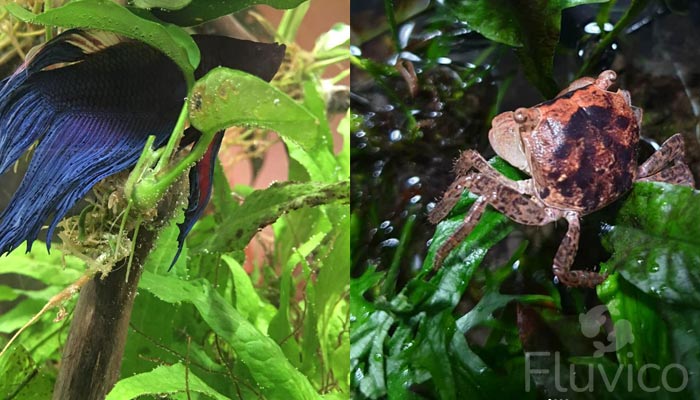
Java Fern Windelov and Tank Mates
Choosing appropriate tank mates for your Windelov Java Fern is crucial, as it ensures both the plant’s well-being and a balanced ecosystem within your aquarium.
Fish:
- Small, Peaceful Fish: Species such as Tetras, Rasboras, Guppies, and Mollies are great companions as they are non-aggressive and do not feed on plants.
- Bottom-Dwelling Fish: Corydoras and Otocinclus catfish are not only safe tank mates, but they also help control algae growth which can compete with the fern for nutrients.
- Betta Fish: While Bettas are known to be slightly more aggressive, they generally leave plants alone, making them suitable companions for the Java Fern.
Invertebrates:
- Snails: Various snail species, like the Nerite Snail, can coexist well with the fern. They can also aid in algae control.
- Shrimps: Shrimps, such as Cherry Shrimp and Amano Shrimp, are harmless to the fern. They can feed on algae and biofilm, helping to keep the tank clean.
Avoid Plant-Eating Species:
Certain fish species, like Goldfish or large Cichlids, may nibble on or uproot the fern, so it’s best to avoid them if you’re planning to have this plant in your tank.
It’s essential to remember that the Windelov Java Fern, like other plants, can be affected by overstocking. Too many fish or invertebrates can lead to excessive waste, poor water quality, and increased competition for resources, which can stress the plant and lead to its poor health. Always maintain a balanced, appropriately stocked tank for the best results.
FAQ
How tall does Java fern Windelov get?
Windelov typically reaches a height of 8 to 12 inches (20 to 30 cm) when fully mature, making it a medium-sized plant ideal for mid-ground or background placement in an aquarium.
Is Windelov Java Fern safe for goldfish?
Yes, However, goldfish are known to nibble on plants, so there’s a chance they might damage or uproot the fern. It’s advisable to secure the plant well in the aquarium.
How long does it take for Windelov Java Fern to attach to driftwood?
It typically takes the Windelov around 2 to 3 weeks to properly attach its roots to driftwood or other surfaces in the aquarium, depending on conditions such as light and nutrients.
Is Windelov Java Fern a floating plant?
No, Windelov Java Fern is not typically a floating plant. It is usually attached to hardscapes like rocks or driftwood. However, if unanchored, it can survive while floating, but it won’t thrive as well.
Why is my Windelov Java Fern turning brown?
Your Windelov Java Fern might turn brown due to reasons like excessive light, nutrient deficiency, or poor water quality. It can also be a natural aging process, where older leaves die off to make room for new growth.
More Reading

15 Types of Cryptocoryne: Which is Best For Your Aquarium Setup?

16 Awesome Low Light Aquarium Plants (Mosses, Ferns & Stem Plants)


18 Types of Aquarium Moss: Photos, Care, Propagation & Growth Guide

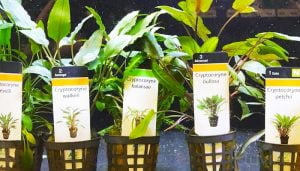
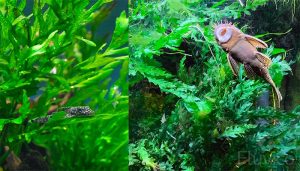
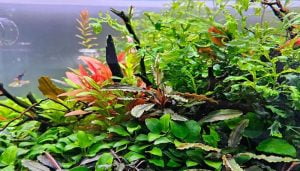

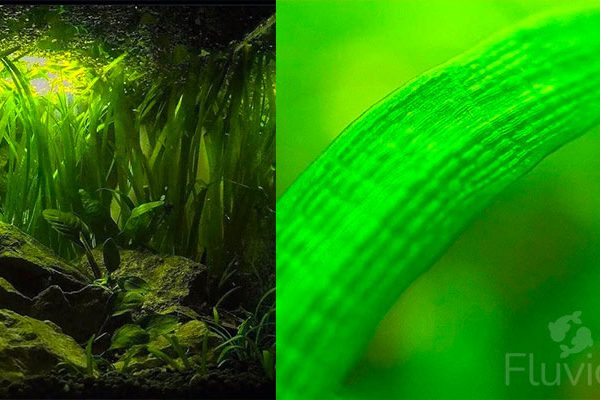
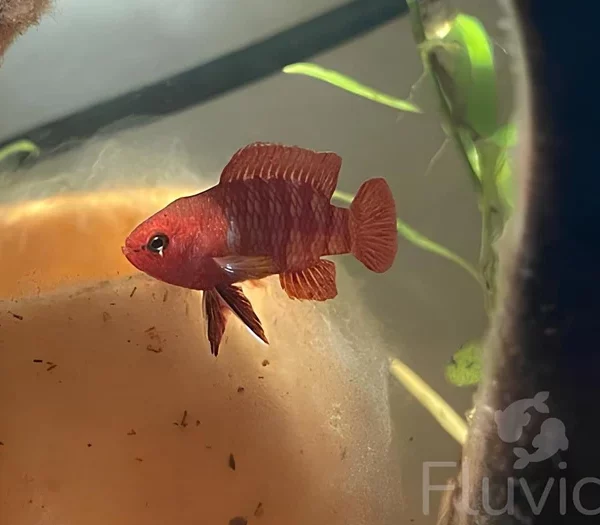
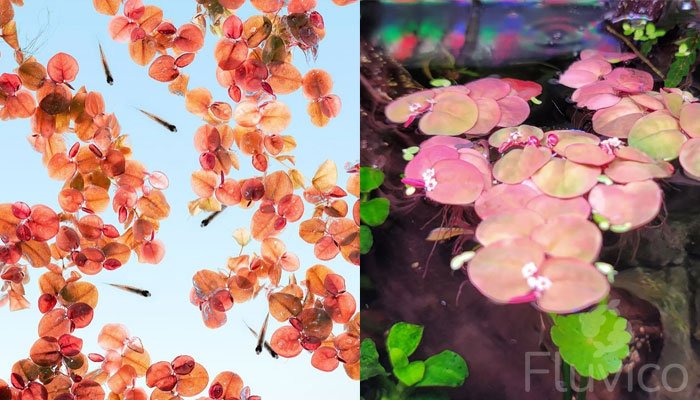
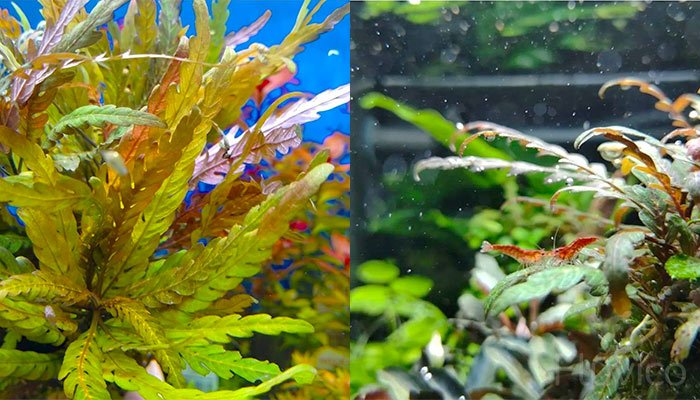
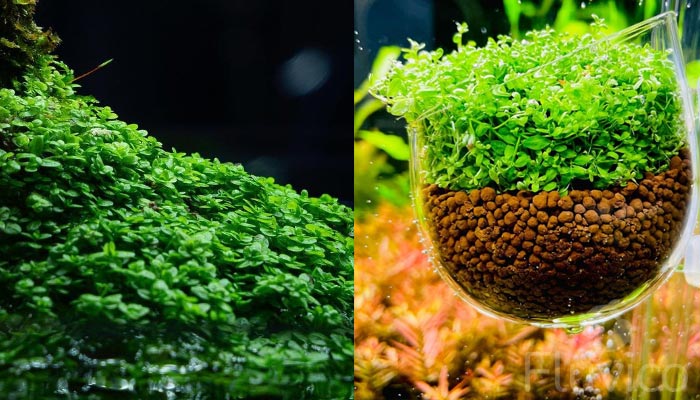
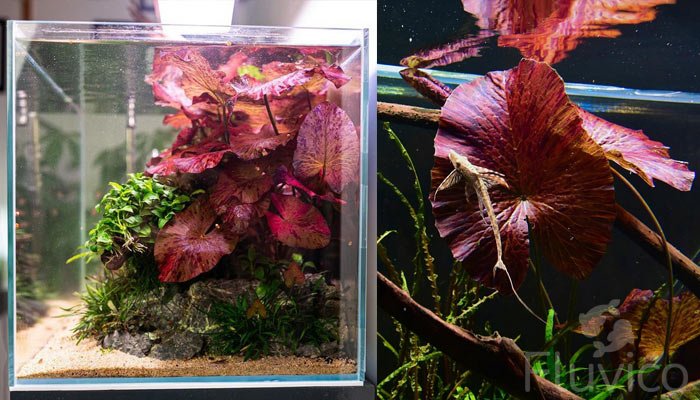
Hope you enjoyed our Windelov Java Fern Care guide!
If you have any questions? Ask away, we’re here to help!
All the best,
Daniel